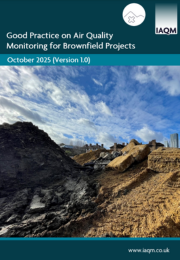This guidance aims to improve collaboration between those working in the air quality and contaminated land disciplines, be they consultants, developers, or regulators, and to increase understanding of interactions between topics. It describes best practice in the monitoring of air pollutants, including individual compounds and the odours that they contribute on remediation sites, and assists in complying with the regulatory framework which governs remediation activity. It provides suggestions for comprehensive analysis against a wider range of criteria to protect the health of communities during remediation, outlines recommendations for communicating risk to stakeholders, and provides an overview of mitigation techniques.
This document can be applied to different kinds of remediation projects where there may be emissions to air (e.g. sites for redevelopment in the planning system, permitted sites such as landfills, voluntary site cleanup outside the regulatory framework). It points to what good practice looks like to help specialists apply their professional judgement when designing, undertaking and/or reviewing bespoke monitoring surveys. It is intended to be scalable, giving examples of good practice rather than being prescriptive as this would not be possible given the wide range of site types. Where there is flexibility, this is intentional.
The guidance has been produced by the Institute of Air Quality Management.


